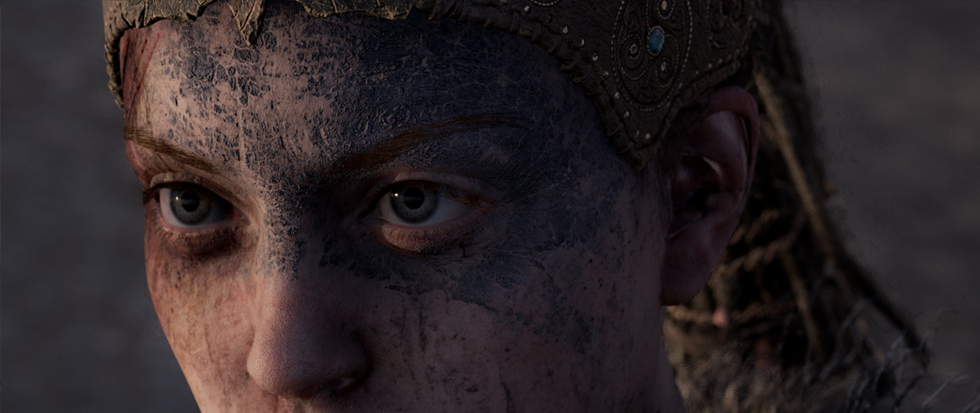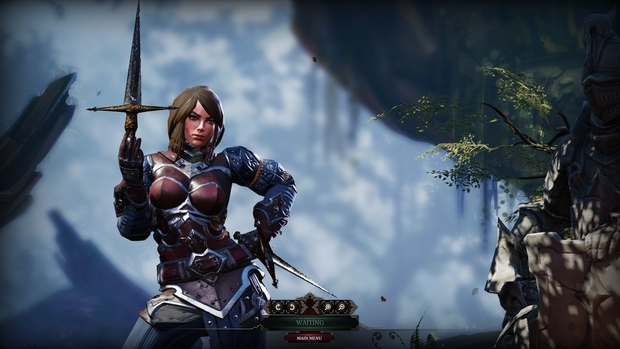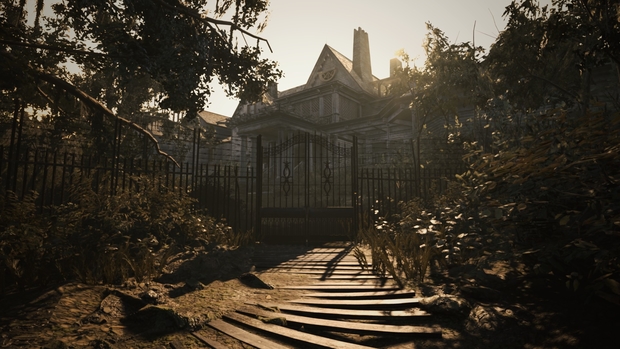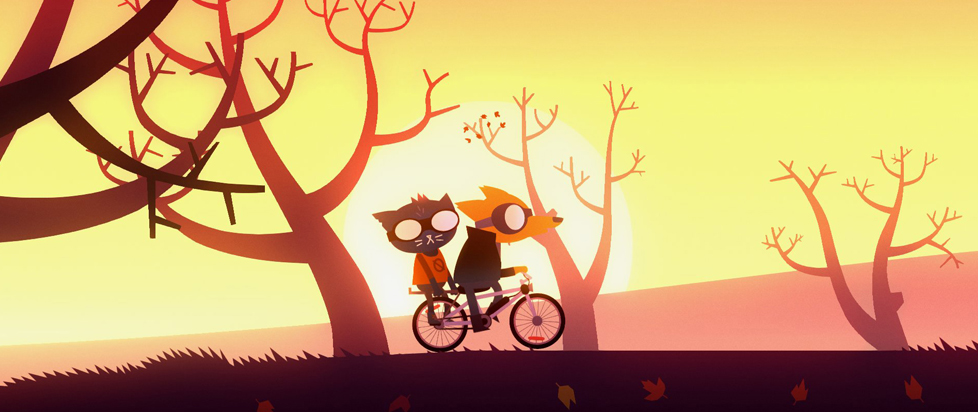
GB Burford: GOTY 2017
It is a shame that I do not have $66,364.34 to spend on games. According to Sergey Galyonkin, the creator of the wonderful resource Steam Spy, that is what it would cost you to buy every game released on Steam in 2017 as of December 21. There are 8,760 hours in a year, but more than 6,000 games were released on Steam as of November, which means that if you played every game released until November for a mere 90 minutes, with no food or sleep, you’d find yourself half-way into January.
It is impossible, in other words, for a Game of the Year list to be anything more than the reflection of person writing it. Players must be cautious; our time and funds are precious resources. Some of the best games I played in 2017 weren’t even games released in 2017; I finished Homeworld 2 again, dipped my toes into Evil Genius, and bumbled around the nightmarish world of Receiver.
I have friends who love solving puzzles or mastering difficult button combinations, but to me, the best games are the ones that take you places, letting you get out of your body for a little while and become someone else. I was fortunate that this year’s games took me on so many incredible journeys. Here are ten of my favorites.
Divinity: Original Sin 2

I had high hopes for Larian, but I didn’t expect them to make the greatest role-playing game of all time. If the platonic ideal RPG is about allowing the freedom of choice but personal stories of a tabletop game, then Divinity: Original Sin 2 is the closest thing I’ve ever seen to that goal. Original Sin 2 creates memorable moments, not just through its deep approach to systems and skills, but also through its intricate questlines.
One of my favorite moments in the game came when I, a clever rogue who had developed a fascination with necromancy, decided to transform the corpse of a boss into a bomb, wiping out several nearby enemies. It was a perfect plan, except that I had failed to loot the boss first, which meant I cost our party our loot. The rest of the party groaned and plotted my assassination. We reloaded the save instead.
The breadth of meaningful choice in Original Sin 2 is astonishing; my party and I restarted the game a few hours in and were shocked to discover how meaningful our choices could be. Four-player co-op incredible; I hope more developers consider its inclusion in their games.
What Remains of Edith Finch

When I finished Edith Finch, I felt robbed, not by the game, but by fate. The Finch family is cursed, its members doomed to horrible ends. Everyone talks about the cannery scene with its wonderful, slow burn, and it’s certainly a highlight, but for me, it was the abrupt ending, which felt like a catch in the throat before the tears come.
I’m not one for walking sims; they rarely do more than exposit while players push forward on the mouse. With Edith Finch, I swung higher and higher on a swing. I played with toys in a bath. I slunk through the shadows, snatching a ship’s crew with my glistening tentacles. I did all this and so much more. I became a part of the Finch family, lived their lives, witnessed their tragedies.
The Finch family deserved better than what they got, but I was glad to have been a part of their story nonetheless. It takes a remarkable game to make me fall in love with a genre that I’ve struggled to enjoy, but What Remains of Edith Finch did just that.
Hellblade: Senua’s Sacrifice

We often speak of video games as power fantasies, as temporary ego massages, designed to do nothing more than tell the player how good they are at everything. Plenty of games tell you that you’re the chosen one, the hero destined for success, but because the end seems predictable, it lacks impact.
Hellblade is different, putting you in the shoes of Senua, a woman suffering from a seemingly unbeatable illness, as she journeys into Hel. Hellblade is very much a Ninja Theory game, with their trademark sluggish combat, boring enemies, and emphasis on facial capture, but the experience is elevated with its brilliant sound design and presentation, like the haunting whispers of the furies, strange voices in Senua’s head that work with and against her.
Senua is no mythic hero, ready to seize her destiny. She’s a trembling and terrified thing, moving forward through sheer conviction, and that’s why it worked. I know what it’s like to struggle with a disease no one seems to understand. I know what it’s like to feel hopeless but still want to press on. Hellblade: Senua’s Sacrifice captured what it was like to deal with chronic illness in a way few works of fiction often do.
XCOM 2: War of the Chosen

I loved Firaxis’ XCOM reboot and its expansion, but XCOM 2 was a tremendous disappointment. From technical issues to frustrating user experience quirks to enemies that weren’t fun to fight, XCOM 2 is the most disappointing sequel I’ve played this generation, so it came as a welcome surprise that War of the Chosen, its expansion, would end up on my Game of the Year list.
XCOM 2: This Time It’s Personal, which is what it should have been named, fixes the game in so many ways that it required a total overhaul of the game’s code base, which is why some of its improvements were never patched into the main game. One of my favorite changes is the Darkest Dungeon-inspired fatigue system, but the best addition of all are the eponymous Chosen. They make the conflict so much more personal by taunting you, showing up at inopportune times, and even hunting down your base. XCOM feels more vibrant now than ever before. XCOM 2: War of the Chosen still doesn’t feel as tight or exciting as Enemy Within, but it’s the best thing that could have happened to XCOM 2.
Resident Evil 7

When Resident Evil 7 was announced, I found myself anxious. First-person horror games have become popular lately, but they’re all flight, no fight. Previews and fan speculation made comparisons with games like Outlast and Amnesia, while Beginning Hour, the game’s demo, lacked any fight whatsoever. Thankfully, Resident Evil 7 plays more like a classic Resident Evil game, but with the best controls and camera in the series thanks to its first person perspective.
The series has become increasingly bombastic over the years, emphasizing direct-to-DVD thrills at the expense of its earlier, more intimate horror moments, but Resident Evil refocuses on the classic survival horror elements that made the series so great to begin with. Instead of cartoonish supervillains, we face off against the Bakers, a family with strange, monstrous powers. Rather than large cities, we spend most of our time on a small patch of Louisiana swampland.
Resident Evil 7 is one of the finest horror games I have ever played. Because it’s a VR game, Capcom paid special attention to making the first-person camera feel like more than just a floating camera. Non-violent horror games tend to lack emotional variety because they limit you to running and hiding; Resident Evil 7 counteracts this, using its camera, its inventory system, and the player’s ability to fight to create an enticing emotional blend. There are moments of fear, stress, suspense, excitement, and even relief, which makes it one of the richest emotional experiences in horror games today.
Dishonored: Death of the Outsider

Arkane makes great games, but after Prey, my faith was shaken. Growing up in a fairly strict religious community, one thing I’ve always resented about Arkane’s games is feeling like I was being judged by an arbitrary metric, rather than having a world that responded to my actions. Prey felt the most judgmental out of all the games, ending with a scene where I was, quite literally, judged for my actions. When Death of the Outsider was announced, I was excited, but at the same time, I felt certain that, once again, that my intent and the game’s judgement wouldn’t match up.
I didn’t need to be worried; Death of the Outsider sees an Arkane that has polished its mechanics to a beautiful smoothness and stripped out the judging elements entirely. The game feels just as personal as the previous games, but more natural in its responses to the player.
Arkane’s pitch-perfect stealth gameplay still feels incredible, but the addition of new non-lethal abilities let its systems shine even more. The level design is fantastic, though I did find some locations more difficult to ghost than I felt they should have been. Despite this, Dishonored: Death of the Outsider is Arkane’s most-focused, best-executed game yet.
The Evil Within 2

The Evil Within 2 asks a simple question “what if Resident Evil 4 had good controls?” The answer, as it turns out, is that Resident Evil 4 would be a great game. At the behest of some friends, I began playing Resident Evil 4 this year, and have come to the conclusion that its fans are suffering from a severe case of Stockholm Syndrome. Good controls, like editing and sound design, are invisible, but Resident Evil shoves them in your face.
In Resident Evil 4, if you want to scooch two inches to the right to line up your sniper rifle perfectly with an enemy who’s just ducked behind a pillar, well, enjoy rotating to the right, walking two inches, then rotating left, planting your feet firmly in a shooting position, and re-aiming.
The Evil Within 2 is a dramatically better game. The movement is fluid and precise. Enemies stumble and explode in juicy, overdramatic ways. There’s a careful, intelligent game here. It’s gorgeous too, with callouts to shows like Hannibal and Twin Peaks. The shotguns feel incredible, a must for any game with shooting elements.
Most horror games are tight and claustrophobic, determined to surround you with inescapable foes. The Evil Within 2 is a great deal more confident, with its open world levels in Chapter 3 and 7 reminding me more of Silent Hill than Resident Evil. The plot wavers somewhat after introducing its second big-bad, Theodore, but the gameplay never does.
Mario + Rabbids: Kingdom Battle

I bought Kingdom Battle because it looked bright, colorful, and exciting, which was just the sort of thing I needed in my life at the time. Rabbids are a lot like Universal’s Minions, so I wasn’t expecting much; children love them, adults love to complain about them. Surprisingly, Kingdom Battle is tactically dense turn-based strategy game, an exemplar of its genre.
Kingdom Battle is such a remarkable achievement; it’s nothing like anything Ubisoft or Nintendo have ever released before. It strips out a lot of the frustrations I have with XCOM. Take cover, for instance. You either have a 100%, 50%, or 0% chance to hit an enemy. No more cases of missing ten 80% shots in a row here.
In XCOM, missions are randomized; it’s a board gaming approach to simulation. Kingdom Battle’s missions are different, structured as bespoke puzzles, designed to be completed in a certain amount of turns, played in a specific way. This isn’t just a great strategy game, it’s the first Mario game I truly love. Mario + Rabbids: Kingdom Battle is different than XCOM; it’s clever and thought-provoking, and sometimes, that’s all one needs from a strategy game.
Wolfenstein II: The New Colossus

BJ Blazkowicz begins The New Colossus suffering from fatal injuries; he knows he doesn’t have a lot of time left. The New Order felt amazing, letting us tear through Nazi forces with BJ’s impossible, superhuman might, but The New Colossus feels different; for half the game, we’re capped at 50 health, and enemy bullets hit harder than ever before. BJ’s fate seems certain; his monologues in the previous game were about hope and fighting for a better future. Now he speaks about his life coming to a close, clenching his teeth and pretending to be alright, praying to live just a little longer, so he can save the people he loves.
Like Hellblade, The New Colossus is no power fantasy. It’s a shooter that begins with a fight in a wheelchair, that lets you play as a child, and forces you to confront your father as you’re about to become one yourself. A friend of mine said that Wolfenstein II is a shooter that hails from a reality where No One Lives Forever was a bigger influence than Half-Life 2; I’m reminded of the Metro games. This is a strange and wonderful shooter, and it must be played to be believed.
The New Colossus isn’t perfect. The pacing is strange, enemies are less readable, stealth feels fiddly, some of the levels aren’t great, and playing with full health and armor later in the game feels far more difficult than the previous entries in the series were on Uber difficulty. As mechanics go, The New Colossus is the weakest of Machinegames’ three entries. Despite this, the story itself is one of the best, most remarkable stories in video gaming, using the first person perspective for maximum effect. Wolfenstein pulls no punches. We’re so used to stories hitting a single emotional note that exploring The New Colossus’ emotional spectrum can feel like whiplash, but Machinegames earns every one of its story beats.
For me, however, The New Colossus is more than that. Like Hellblade, it depicts what it’s like to live with an illness. I know, because I live that life every day. I’ve gotten good at hiding my pain from those closest to me. I get what it means to soldier on, even though you’re not really sure why. I know what it’s like to feel like your life’s been stolen from you, and that there’s no hope left. Wolfenstein: The New Colossus gave me hope. It made me want to keep fighting.
Night in the Woods

I’m not wild about 2D games, so I didn’t expect to enjoy Night in The Woods, but the premise stoked my curiosity. Mae, a college dropout, returns home to try to figure out what to do with her life. It’s a portrait of small-town decay, a reflection of millennial life outside of big cities. There’s a hopelessness to Possum Springs; local places like the Party Barn are shutting down, some people are leaving or disappearing, and most people who haven’t escaped to college are stuck working dead-end retail jobs, despite being as bright and capable as anyone anywhere else.
Night in the Woods depicts America as it is for those of us who don’t live in the big cities, for those of us who are still trapped in recession, for those of us who find it hard to believe when the government tells us the economy is booming. Sure, it might be booming for the millionaires in Silicon Valley, but the rest of us are dying a slow death.
For me, Night in the Woods works because it’s so focused on telling the story it wants to tell, gaming cliches be damned. It’s a game where having conversations with people feels natural and often affectionate, even between characters who seem to hate each other. When Mae talks to a neighbor who tells her that people are only polite to her because people are polite in small towns, the conversation rings true. Night in the Woods is a game that knows how people think and talk.
As you play, you learn more about Mae. People hate her because she has an illness that’s difficult to understand. She returned home to rest and recover, because that illness was draining her life. Home has changed so much, but some things are the same as they ever were. There’s a rot underneath it all; you can see it in the boarded up storefronts, the for sale signs, the seedy apartment building where Mae’s best friend Gregg lives. Her band has a song about wanting to be anywhere but home. All of it rings true. All of it feels familiar. Night in the Woods works because it evokes so many complex feelings and deals with them as best it can.
I relate to Mae, perhaps more than any other fictional character I’ve encountered. I know what it’s like to be misunderstood because of your illness. I know what it’s like to have to move back into your home after you thought you were independent, because my failing health took that from me. I know what it’s like to move back to your hometown, to see it dying. There’s a church down the street with a big “for sale” sign out front and the local gas station is gone. I know what it’s like to want to dodge questions about the future and pretend everything’s fine when your life feels like it’s crashing down around you.
If Wolfenstein and Hellblade captured the emotions of dealing with illness, and Edith Finch depicted what it was like to feel robbed of a happy life, Night in the Woods took them at face value. It’s a slice-of-life story, but not one that’s entirely hopeless. The story goes places you might not expect, and it does a fantastic job getting there.
Art, I think, is at its best when it helps us deal with life. I know people who want art as a means of escape, and games like Kingdom Battle did that for me. I know others who want art that instructs, only showing us idealized realities, telling us how we ought to be, but I don’t think that has much value. 2017 was not a great year for me, and truth be told, I’m worried about the future, but playing games that took me places and let me deal with the problems I face in new ways has helped me make it through the year.
These weren’t the only games from 2017 that I played this year, but I enjoyed them the most. Breath of the Wild was enjoyable but ultimately, I felt, just another open world collect-a-thon, and the prospect of finding 900 Korok seeds did not appeal to me. Prey, I had hoped, would be one of the best games of the year, and nearly all of my friends love it, but it didn’t click for me. Maybe one day it will.
I missed plenty of games other people loved. I haven’t had a chance to play Yakuza 0 or Kiwami yet. People tell me that Nier: Automata is great after you beat it a few times. I’ve heard good things about Nioh, Cuphead, Assassin’s Creed: Origins, Gorogoa, Opus Magnum, and dozens of other games, all of which I hope to play in the future.
For me, 2017’s best games were the ones that let me deal with the difficulties of life, sometimes through escapism and other times through confrontation. I don’t know if I have a clear Game of the Year winner in mind, but I’m beyond grateful that I got the chance to play each one.





